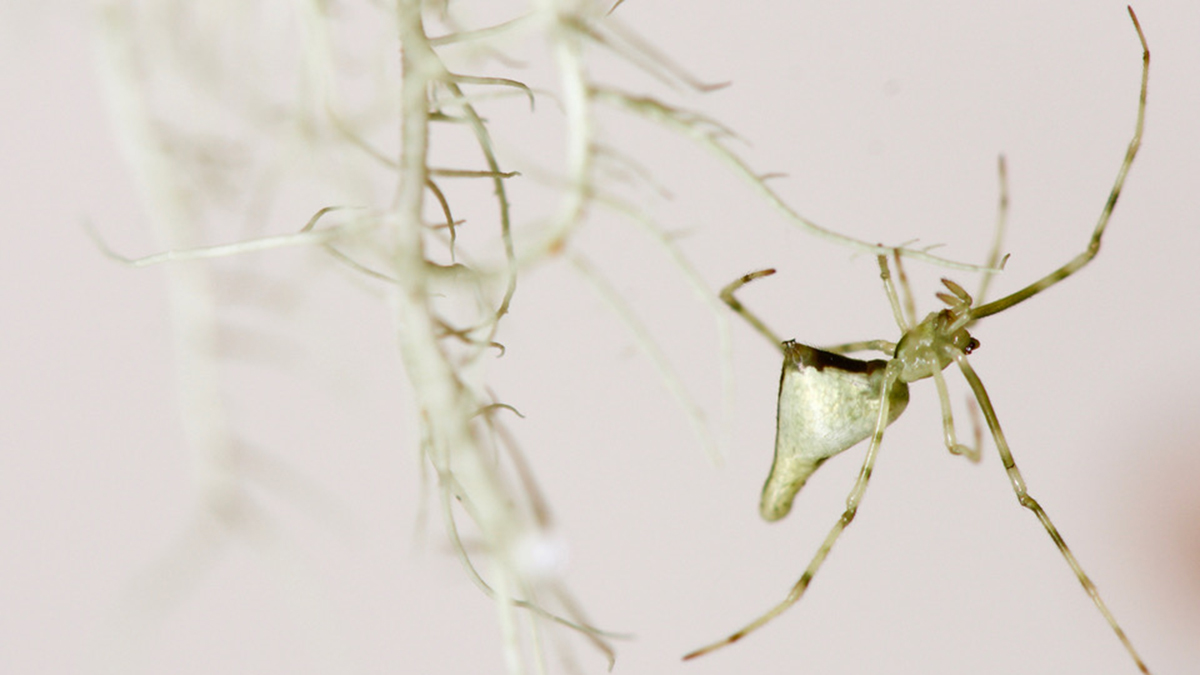
There are 14 different species of Ariamnes stick spiders found on Hawaii islands and all of them have quite unique physical traits. Interestingly, a new study has found that each of these distinct species was evolved from one species that arrived on Hawaii nearly 3 million years ago.
This rare case of evolution is considered as a good example of a process called "adaptive radiation", one of the concepts that Charles Darwin introduced in his theories on natural selection, notes a report by the University of California, Berkeley.
Around 2 to 3 million years ago, parasitic spiders from across the Pacific Ocean set sail on the backs of other larger spiders and arrived in the secluded, yet highly diverse region of Hawaii, notes the report by Rosemary Gillespie, a professor of systematic entomology at the University of California and her fellow researchers.
The spiders gradually began to adapt to the different environments of Hawaii and also made significant changes to their diet over time, it stated.
These stick spiders, the report said, are originally known for their skills of stealing food from webs by snipping them off from other spiders. After they arrived in Hawaii, there were not too many spider webs to steal from, so they started to trap and kill other spiders. Soon, a new species evolved out of them.
After spiders on rocks evolved to adapt to its surroundings, tree-dwelling spiders also branched off into a different species, this went on till there were 14 new spiders, all their own species, on the islands, from one set of spiders that arrived there.
The insects that evolved on different islands have physical forms that are unique to it. "This very predictable repeated evolution of the same forms is fascinating because it sheds light on how evolution actually happens," says Gillespie, the lead author of the paper. "Such outstanding predictability is rare and is only found in a few other organisms that similarly move around the vegetation."
Also, movement of spiders from the oldest islands to the newer ones is also readily seen in the way they have evolved, notes the report. Scientists have found that the Hawaiian islands were formed in a chronological order, starting from Kauai -- the oldest-- five million years ago. It was followed by Oahu, Molokai, Lanai, Maui, and finally, the main island of Hawaii, which is the youngest, is less than a million years old.
Based on where they are from, each spider can be categorized; the brown ones live in the rocks, the golden spiders live under leaves, and the white ones live on lichen. However, like all the delicate ocean and island-based creatures, human activity, and invasive species pose the great threat to their existence, the researchers said.
"We need to be able to figure out this diversity and document it and describe what's so special about it, so that people know about it. It's being lost and it's a desperate situation," says Gillespie.















!['Had denied Housefull franchise as they wanted me to wear a bikini': Tia Bajpai on turning down bold scripts [Exclusive]](https://data1.ibtimes.co.in/en/full/806605/had-denied-housefull-franchise-they-wanted-me-wear-bikini-tia-bajpai-turning-down-bold.png?w=220&h=138)
![Nayanthara and Dhanush ignore each other as they attend wedding amid feud over Nayanthara's Netflix documentary row [Watch]](https://data1.ibtimes.co.in/en/full/806599/nayanthara-dhanush-ignore-each-other-they-attend-wedding-amid-feud-over-nayantharas-netflix.jpg?w=220&h=138)



